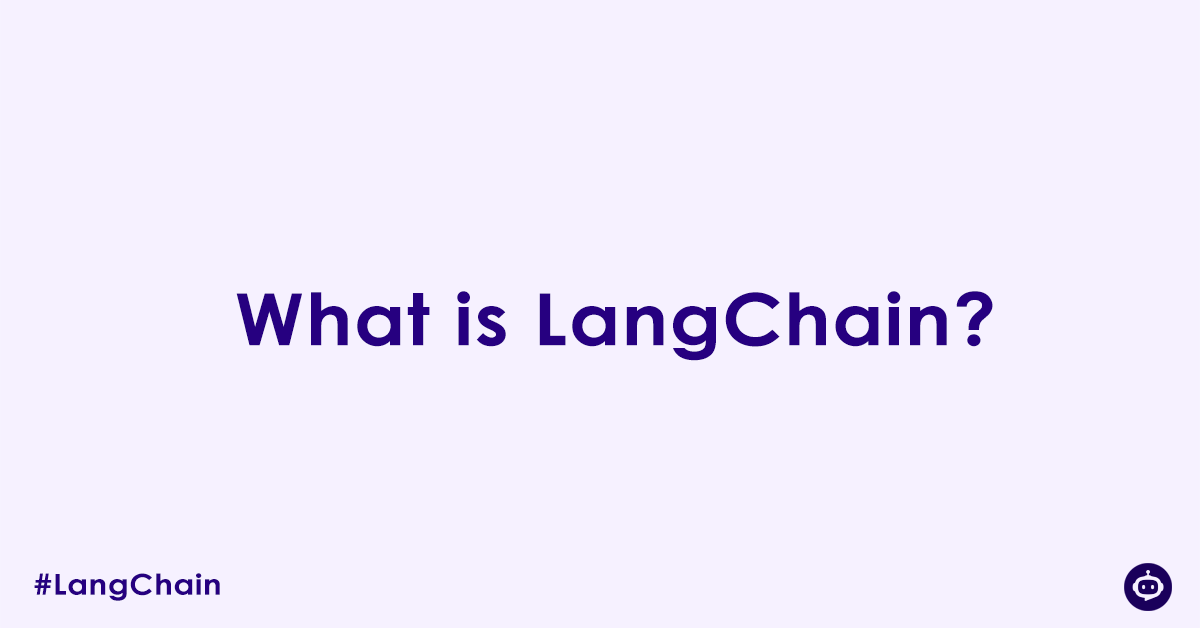In the rapidly evolving world of artificial intelligence, the rise of Large Language Models (LLMs) like OpenAI’s GPT, Anthropic’s Claude, and Meta’s LLaMA has opened up powerful new ways to build intelligent applications. But tapping into the full potential of these models—especially for building real-world applications—often requires more than just sending a prompt to an API.
That’s where LangChain comes in.
LangChain is an open-source framework designed to build applications powered by LLMs. It allows developers to chain together components for intelligent workflows, access external data sources, manage memory and state, and create powerful, context-aware AI agents and chatbots.
Let’s break down what LangChain is, what makes it special, and how it fits into the AI development ecosystem.
🔍 What is LangChain?
LangChain is a modular framework specifically created to enable developers to build LLM-driven applications that are:
- Data-aware: They can connect to and reason over external data (e.g., PDFs, databases, APIs).
- Agentic: They can make decisions, use tools, and interact with the world autonomously.
- Contextual: They maintain memory and state across conversations or actions.
LangChain isn’t a single tool, but rather a collection of abstractions and integrations that help developers build sophisticated applications more easily and systematically.
It supports Python, JavaScript/TypeScript, and is growing in adoption due to its flexibility and powerful capabilities.
🧱 Key Components of LangChain
LangChain provides a variety of modules you can use independently or in combination:
1. LLMs and Prompts
LangChain provides easy integration with multiple LLM providers (OpenAI, Anthropic, Hugging Face, Cohere, etc.), as well as tooling for:
- Prompt templates
- Prompt engineering patterns
- Chaining multiple prompts together
2. Chains
Chains are sequences of calls (to an LLM, tools, or functions) designed to perform a task. Common chain types include:
- Simple LLM Chains: A prompt template + LLM call
- Retrieval-Augmented Generation (RAG) Chains: Combine external data retrieval with generation
- Sequential Chains: Multi-step workflows
3. Agents
Agents use LLMs to make decisions about what actions to take. They are often paired with tools (e.g., search APIs, calculators, or custom functions).
Agents can:
- Choose what tools to use
- Plan multi-step reasoning processes
- Interact dynamically with the user or environment
4. Memory
Memory allows applications to remember past interactions, maintaining context across a session. This is crucial for building chatbots, assistants, and any app requiring continuity.
Types of memory include:
- Conversation buffer
- Summary memory
- Vector-based memory using embeddings
5. Retrievers and Vector Stores
LangChain integrates with various vector databases (like Pinecone, Weaviate, FAISS, Chroma) to enable:
- Document retrieval based on semantic similarity
- RAG workflows that augment LLMs with external knowledge
6. Tooling and Integrations
LangChain supports a wide range of integrations:
- Databases: SQL, NoSQL, Graph DBs
- APIs: External APIs as tools
- File systems: PDFs, HTML, CSVs, etc.
- LangServe: A fast API server for turning chains and agents into RESTful services
🧠 Use Cases of LangChain
LangChain is especially well-suited for:
- Chatbots and Virtual Assistants
- Knowledge base question answering
- Code generation and data analysis tools
- Autonomous agents for research, automation, or finance
- Document search and summarization
One of its most popular applications is RAG (Retrieval-Augmented Generation), where you let an LLM answer questions based on your own documents or knowledge base.
🔄 LangChain vs Direct LLM API Use
While it’s entirely possible to build LLM apps by calling an API directly, LangChain adds several layers of sophistication:
| Feature | Direct API Use | LangChain |
|---|---|---|
| Prompt templates | Manual | Built-in support |
| Chaining logic | DIY | Built-in Chains |
| Context management | Manual | Memory abstraction |
| Tool integration | Manual scripting | Agent + Tool framework |
| Retrieval from documents | Custom logic | Built-in RAG pipeline |
LangChain accelerates development, helps manage complexity, and promotes reusable, modular code.
🚀 Getting Started with LangChain
To try LangChain in Python:
pip install langchain openai
Then, a simple LLM chain:
from langchain.llms import OpenAI
from langchain.prompts import PromptTemplate
from langchain.chains import LLMChain
llm = OpenAI(model_name="gpt-3.5-turbo")
prompt = PromptTemplate.from_template("What is a good name for a company that makes {product}?")
chain = LLMChain(llm=llm, prompt=prompt)
response = chain.run("robotic arms")
print(response)
For more advanced apps (e.g., RAG, agents), LangChain has comprehensive documentation and starter templates.
🌐 LangChain Ecosystem
- LangChain Hub: A place to share and reuse chains and prompts
- LangServe: Serve your chain as a REST API quickly
- LangSmith: LangChain’s developer observability platform (logging, testing, debugging LLM apps)
LangChain is also increasingly used in conjunction with frameworks like Streamlit, Gradio, FastAPI, and LLM orchestration tools like LangGraph.
🧭 Final Thoughts
LangChain is not just a framework—it’s an ecosystem that empowers developers to go beyond simple prompts and build real-world, production-grade AI applications. Whether you’re building a customer support chatbot, a research assistant, or an autonomous agent, LangChain offers the tools and abstractions to help you scale quickly and thoughtfully.
In a world where LLMs are rapidly becoming foundational to software, LangChain gives you the infrastructure to innovate responsibly and efficiently.
